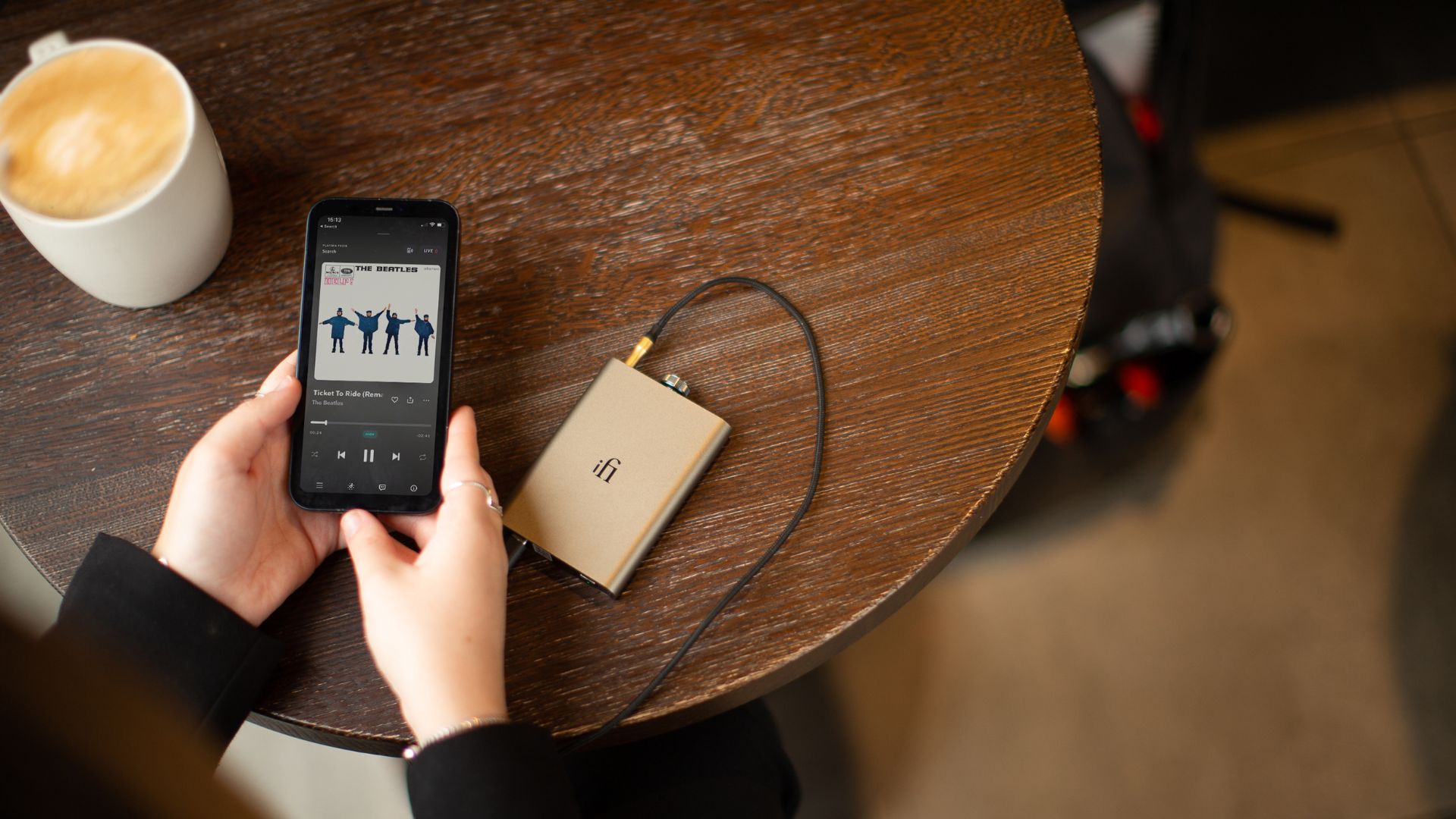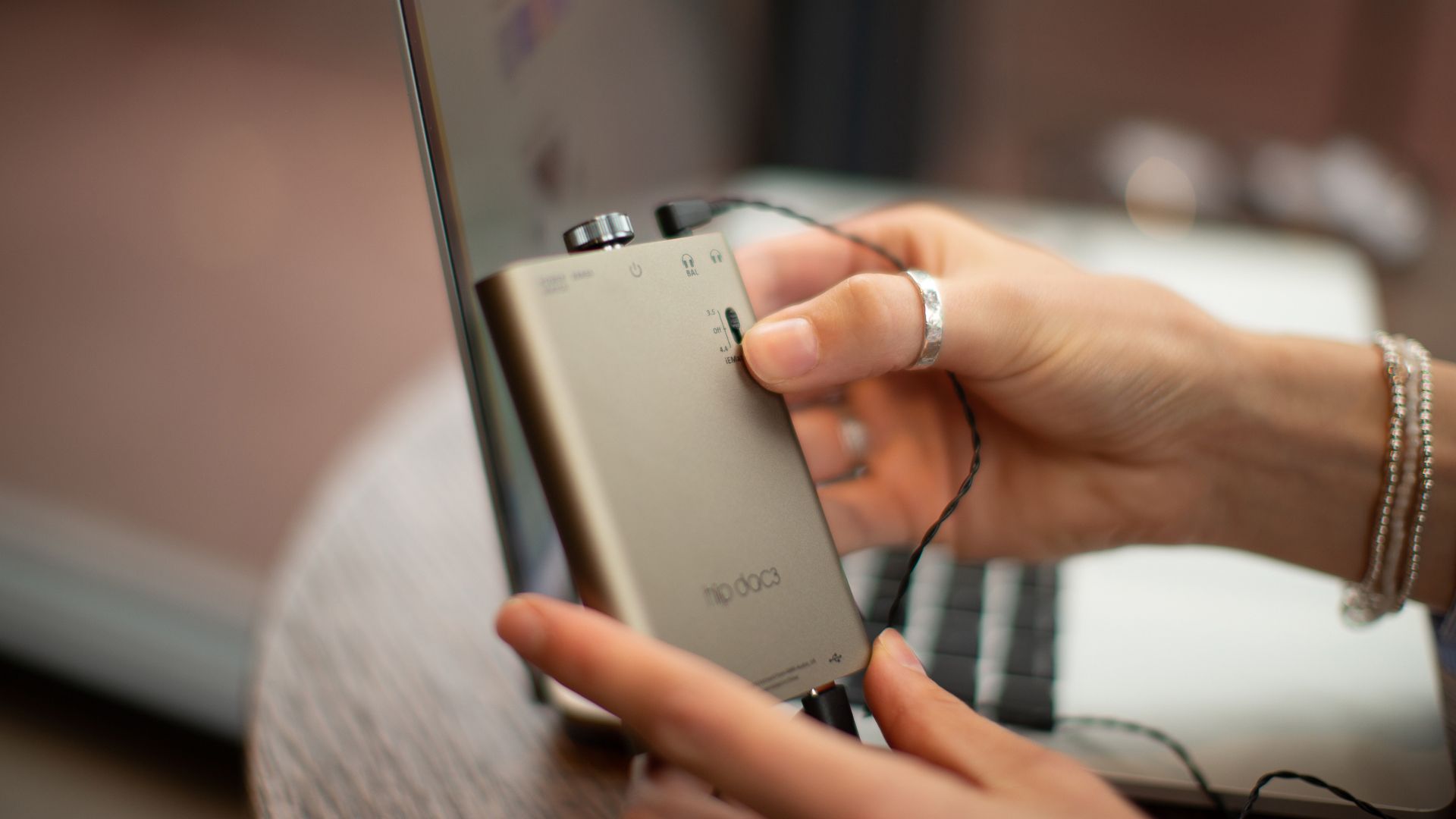Make your iPhone 15 music playback sound incredible with this 'hipflask' USB-C DAC
How to get the best sound possible.

The USB-C port on the bottom of the iPhone 15 line has brought tons of possibilities to Apple's latest smartphones, as the new standard opens the doors to more accessories than ever. One such accessory is called a portable DAC, or digital-to-analog converter, and audio firm iFi has released a premium one that’s perfect for dipping your toes into the world of high-end audio.
It’s called the hip-dac, and it's shaped like a little hip flask. You plug your phone in one end, your headphones in the other, and then it conjures some audio black magic from beyond the realm of human understanding to make your music sound better.
Hold up, what even is a DAC?

Let's back up a minute, and get an idea of what a DAC even is. When you use Apple Music, you might see a little ‘lossless’ symbol when you’re listening to music — this denotes that a super high-quality version of this track is available to listen to. Now, the internals of the iPhone are good, but they’re still not good enough to replicate the hi-res audio that Apple Music is capable of pumping out — that’s where a DAC comes in.
A separate DAC converts the hi-res track that your iPhone can’t fully take advantage of to a listenable format that wired headphones can play, so that you can get the best quality possible. OK, there’s no actual black magic involved, but in fact some very clever circuitry and audio-conversion at play, and the fact that such small boxes are capable of it is wicked.
What’s this about the iFi?

The iFi hip-dac is just one of those devices, and a very funky one at that. First, some stats, for the nerds: The new version of iFi’s hip-dac, now in its third generation, is capable of converting sample rates up to 394KHz, as well as DSD files from 2.8MHz to 12.4MHz. MQA support is on board, as used by Tidal’s HiFi plus tier, and it will tell you what quality and file format is being played with two lights on either side of the volume knob on top.
Balanced headphones (which separate out the stereo signal into four separate wires — a positive and negative for each channel, reducing distortion) are supported, however, with a 4.4mm headphone jack to go with its normal unbalanced 3.5mm headphone jack. That balanced output is handled with iFi’s differential amplifier, while the 3.5mm benefits from the firm's S-balanced circuitry, which cuts crosstalk (electromagnetic interference from other electronic devices around) and distortion when used with single-ended headphones.
Designed for all kinds of headphones, there’s power output up to a massive 600 ohms, although you’ll need to use the Balanced output for those that need above 32 ohms. There’s the iFi PowerMatch switch on the back which matches drive to the headphone load, “adjusting input level and signal strength”.
iMore offers spot-on advice and guidance from our team of experts, with decades of Apple device experience to lean on. Learn more with iMore!
NERD TALK OVER. Not sure what any of that meant? Let’s put it this way; if you’ve ever wanted to experience something a little more than your Bluetooth wireless headphones are capable of giving you, then the iFi hip-dac and a pair of wired in-ears or over-ear headphones could well be the recipe you’ve been looking for. And now that the iPhone 15 finally has a USB-C port, there’s never been a better time to get involved.
The iFi hip-dac will be available from today for $199/£199. Want to learn more about DACs? Here are the best DACs for iPhone.

As iMore's Senior Staff writer, Tammy uses her background in audio and Masters in screenwriting to pen engaging product reviews and informative buying guides. The resident audiophile (or audio weirdo), she's got an eye for detail and a love of top-quality sound. Apple is her bread and butter, with attention on HomeKit and Apple iPhone and Mac hardware. You won't find her far away from a keyboard even outside of working at iMore – in her spare time, she spends her free time writing feature-length and TV screenplays. Also known to enjoy driving digital cars around virtual circuits, to varying degrees of success. Just don't ask her about AirPods Max - you probably won't like her answer.
